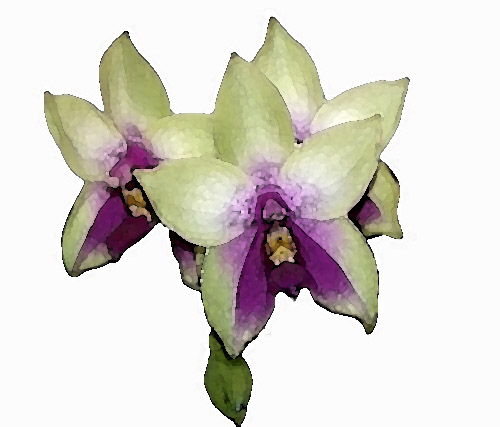
Gradually, growers learned that while tropical orchids are not like other house-plants, they are not especially difficult to grow. Being epiphytes (plants that grow on trees, clinging to the bark, but not parasites), they do not grow in soil, but in various potting mixes, such as bark, or mounted on cork.
New orchid species are still being discovered, but today the emphasis is on conservation. Only a few wild plants are collected, under strict regulations, and species are propagated through seeds or vegetative techniques.
Since 1853, commercial hybridizers and hobbyists have exploited orchids’ inexhaustible capacity to interbreed. Thousands of hybrids are available at a reasonable cost, to suit a variety of growing conditions.
At first, orchid growing was limited to affluent nobles and capitalists who maintained elaborate greenhouses and full-time professional gardeners. Today, the majority of growers keep their orchid collections in small hobby greenhouses, on windowsills, or under artificial lights. Over the past 70 years, scientific progress has made it possible to produce orchids in large quantities, and new advances in hybridizing have made available sturdy, compact, floriferous plants suitable for the home .
The Central New York Orchid Society was organized in 1974 to encourage the conservation, cultivation, and appreciation of orchids. It is open to anyone interested in this hobby. Here you can learn some of the helpful techniques for raising, grooming, and displaying these plants.
The orchid society usually meets on the second Sunday afternoon of September and January, otherwise the first Sunday of the month from October to June. Visitors are welcome. Except for special occasions, meetings are held at the recreation center of Saint Augustine’s Church, O’Brien Road, Baldwinsville, between Peck Road and Route 48. The building is handicapped accessible.
You are invited to join us. Annual dues are $20 per person or $22 per family. For further information contact President Lori Burritt, (315 826-7242), AOS Representative Sue Finger (315 247-8980, jandsfinger@aol.com) or Treasurer Sue Finger.
The Central New York Orchid Society sponsors a major show every fall, sanctioned by the American Orchid Society and Orchid Digest Corporation. Awards from both national organizations may be granted, as well as show ribbons and trophies.
In january we have our Member's Annual Auction, in Spring we offer our annual auction, and in December we have a holiday dinner. At most of our meetings we provide a swap table where members can sell, buy, or trade orchid plants, seedlings, supplies, or pots, as well as a raffle.
